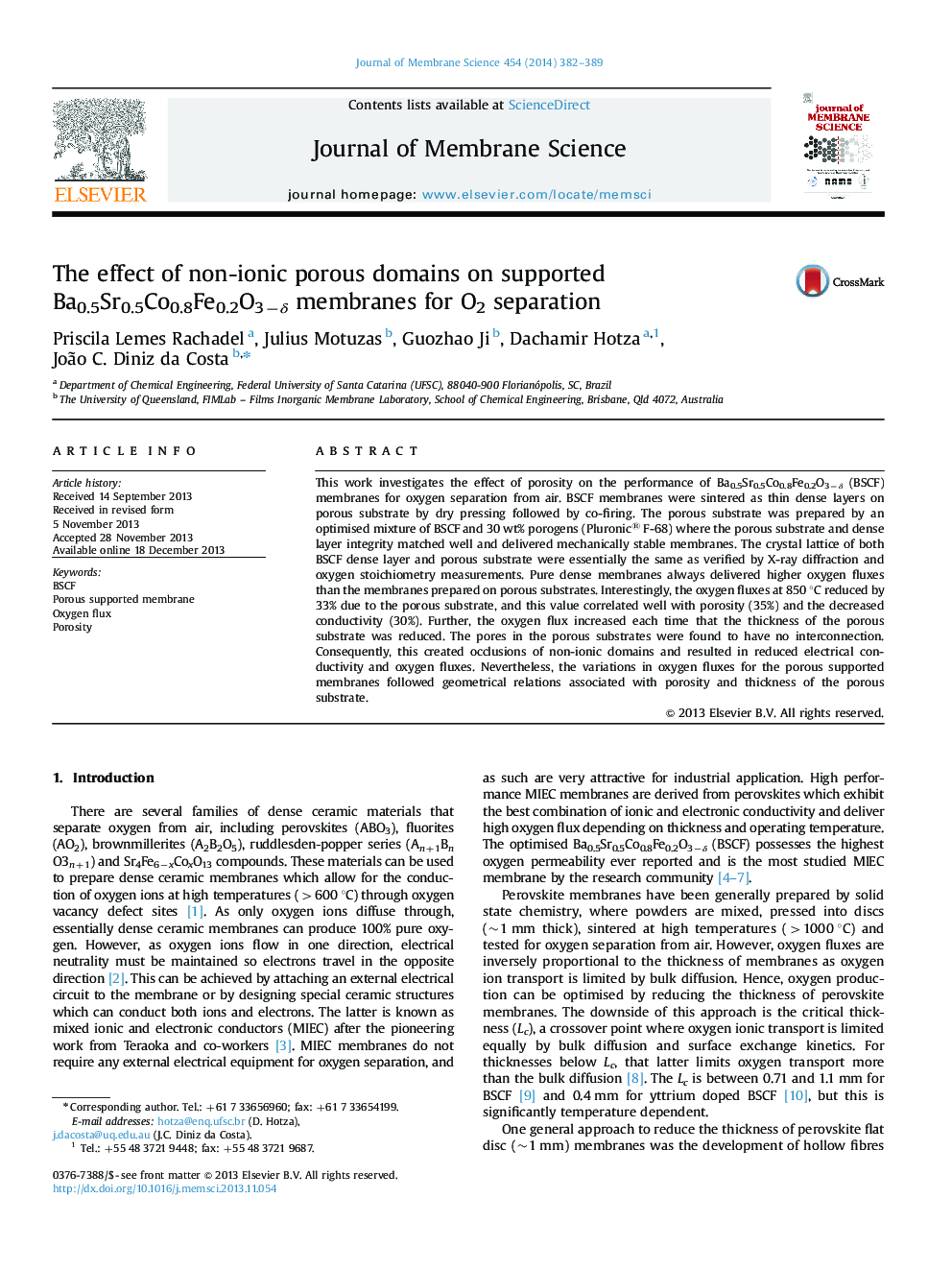| Article ID | Journal | Published Year | Pages | File Type |
|---|---|---|---|---|
| 633961 | Journal of Membrane Science | 2014 | 8 Pages |
•Non-interconnected pores in BSCF substrate created occlusions of non-ionic domains.•The porosity (35%) correlated well with loss of performance.•Porosity reduced electrical conductivity (33%) and oxygen fluxes (30%).•Geometrical constraints prevail in transporting ions through non-connected pores.
This work investigates the effect of porosity on the performance of Ba0.5Sr0.5Co0.8Fe0.2O3−δ (BSCF) membranes for oxygen separation from air. BSCF membranes were sintered as thin dense layers on porous substrate by dry pressing followed by co-firing. The porous substrate was prepared by an optimised mixture of BSCF and 30 wt% porogens (Pluronic® F-68) where the porous substrate and dense layer integrity matched well and delivered mechanically stable membranes. The crystal lattice of both BSCF dense layer and porous substrate were essentially the same as verified by X-ray diffraction and oxygen stoichiometry measurements. Pure dense membranes always delivered higher oxygen fluxes than the membranes prepared on porous substrates. Interestingly, the oxygen fluxes at 850 °C reduced by 33% due to the porous substrate, and this value correlated well with porosity (35%) and the decreased conductivity (30%). Further, the oxygen flux increased each time that the thickness of the porous substrate was reduced. The pores in the porous substrates were found to have no interconnection. Consequently, this created occlusions of non-ionic domains and resulted in reduced electrical conductivity and oxygen fluxes. Nevertheless, the variations in oxygen fluxes for the porous supported membranes followed geometrical relations associated with porosity and thickness of the porous substrate.
Graphical abstractFigure optionsDownload full-size imageDownload high-quality image (201 K)Download as PowerPoint slide
